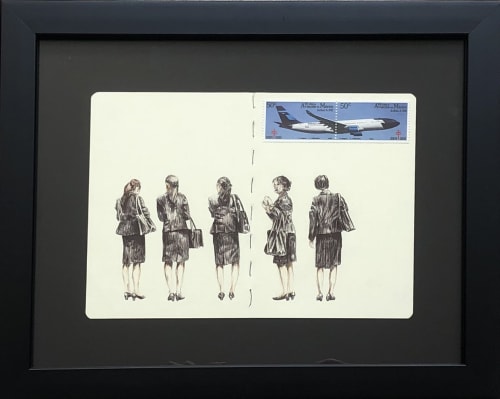By being the result of a mental project brought to fruition through skill, mastery of material, and vision, the work embodies a character and spirit that inevitably moves the observer.
It could be said that Carlos Alarcon's evolution as an artist runs contrary to that of most painters who began by realistically representing the visible world, and have ended up distorting it in favor of expressionist or conceptual aims. In contrast, Alarcon began by producing expressionist paintings laden with socio-political content, and has progressed to creating a type of realistic representation with no obvious or literal message.
The obstinate counter-direction of his work is also manifest in his small drawings which contrast with this era of grand artistic egos. It is also present in his current preference for classicism, as his work has changed from the avant-garde and experimental to a practice that prizes skill, knowledge, craftsmanship and aesthetics.
Moreover, his work allows us to understand that, for the artist, painting and drawing possess the ability to stir admiration by their mere presence. By being the result of a mental project brought to fruition through skill, mastery of material, and vision, the work embodies a character and spirit that inevitably moves the observer. It predisposes a viewer to find arguments that may not have crossed the artist's mind, but which effectively convey any thoughts or emotions prompted from the work itself. Keep in mind that painting possesses a special ability to both demonstrate and poeticize the problems and hopes of human beings.
Fragment of Eduardo Serrano's text, "I don't Draw on Sundays."

